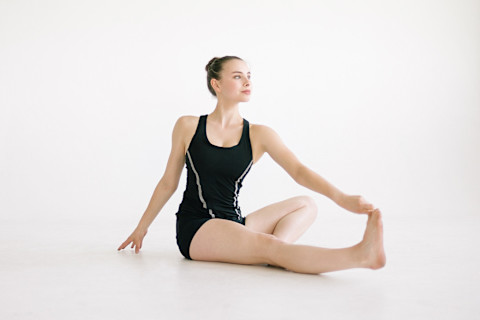We've Been Stretching The Wrong Way — Here Are The Ultimate Do's & Don'ts

Flexibility is integral to a healthy and mobile body. Flexible muscles allow you to perform better in your daily activities and reduce the risk of injury. Inflexible muscles often pull your body out of its natural alignment, and then force it to use compensation patterns to perform when mobility is not sufficient.
Some of us are more "naturally flexible" than others, but it's hard to know if this is a result of genetics or lifestyle habits. The activity we did as children or lack thereof can have an ongoing effect, along with the type of job we have, and the exercise we do. No matter if you're super mobile or very stiff, stretching can benefit you.
Stretching can also help reverse long-term bad postural habits, particularly for those of us who spend most of our day sitting down. The most common postural types are kyphosis and hyperlordosis. Kyphosis is a hunchback posture, which shortens the chest muscles. Stretching through the chest and shoulders will help. Hyperlordosis (also known as swayback) is an excessive curve inward of the lower back, requiring you to stretch tight back muscles. Bad posture is one of the best incentives to stretch. If you fix your alignment, your body will move better and feel better. Your workouts will become more effective because you'll easily access the correct muscles needed to optimize training.
Without further ado, here are my do's and don'ts of stretching.
Here's what you should do:
- Target and prioritize tight muscles, and be specific with stretches for those areas.
- Stretch consistently, stretching at the end of the day for at least 10 minutes.
- Set an alarm for every four hours at your desk, and work on opening up your chest and stretching your neck.
- Use deep breathing throughout the stretches, and always think about making the stretch longer instead of deeper.
- Remember to continually engage the abdominals and think about the alignment of your hips, keeping them as square as possible.
- After a workout, use static stretches, holding each position for 10 to 30 seconds. And be sure you're always working in a comfortable position to avoid over-stretching.
- Stretch to reduce DOMS (delayed-onset muscle soreness). Stretching consistently is shown to increase blood flow to muscles, quicken recovery time, and help with muscle soreness.
Here's what you shouldn't do:
- Don't stretch first thing in the morning or before moving your muscles.
- Don't overstretch (holding for more than 30 seconds at a time).
- Don't hold your breath while stretching; this increases tension in the area you're trying to relax and release.
- Don't relax your abdominals when stretching; you want to be actively stretching and holding your body in proper alignment.
- Don't stretch an injured area unless otherwise advised.
Need some ideas? Here are a few stretches from my six-week stretch program to get you started.
Hip Flexor Stretch
Start in a kneeling position, straighten the back leg, lifting the heel off the floor and place the opposite hand on the floor. Twist to open the body into that front leg, lifting the arm, and gaze to the ceiling. Hold for 30 seconds, right and left.
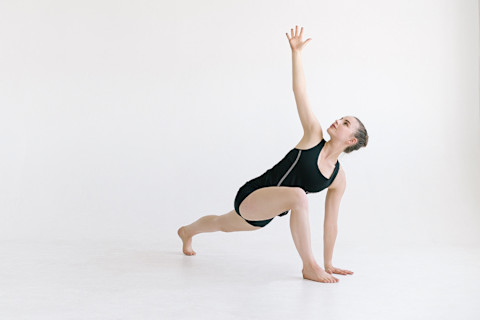
Hamstring Stretch
Start with a wide parallel stance, continuing to engage the core and release down into a deep hamstring stretch. Beginners: Cross your arms and hold alternate elbows as you hang. Advanced: Reach for alternate toe to hand. Hold for 30 seconds.
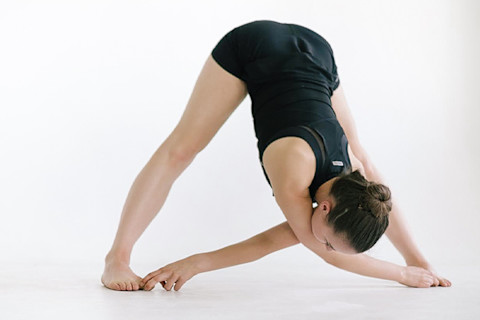
Side Stretch
Start with one leg extended to the side and tuck the other in across the midline. Side-bend over the extended leg, keeping the shoulders in a stacked position. Hold for 30 seconds, right and left.
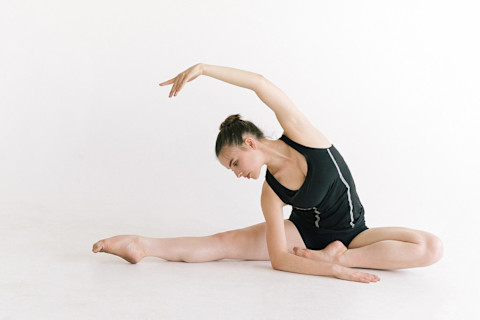
Runner's Stretch
Start in a kneeling position, straighten the front leg, and place hands on either side of your calf on the floor. It should feel as though you're pushing your spine into your stomach to keep a straight alignment. Hold for 30 seconds, right and left.
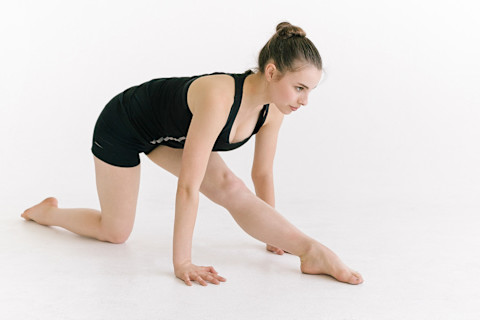
Calf + Peroneus Stretch
Sitting down, extend one leg forward and bring the other foot to rest on the inside of your knee. Reach your hand toward the big toe of your opposite foot, changing the alignment of the foot so it points slightly inward. Sit up straight, and push your lower back into your core to maintain posture. Hold for 30 seconds, right and left.
